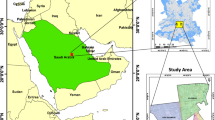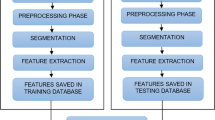Abstract
Classification of remotely sensed images is a rich research field wherein techniques from conventional statistics to recent developments such as Artificial Neural Network, Fuzzy logic etc. has wide applications. Conventionally remotely sensed image classification referred to pixel classification based on broad categories such as vegetation and water bodies. With the availability of high-resolution imageries, shape analysis of macro structures contained in images becomes an important and difficult task. Although conventional statistical pattern recognition techniques give a reasonable result, Artificial neural network methods seem to be giving better results. In this paper, we give a survey of feed-forward neural network used for shape classification and a Hopfield model with an improved learning rule, for a typical shape analysis problem.
Similar content being viewed by others
REFERENCES
Abbott, L. F., and Kepler, T. B., 1989, Optimal Learning in Neural Network Memories: Preprint BRXTH-255 Brandeis University.
Buhmann, J., Divko, R., and Schulten, K., 1989, Associative memory with high information content: Phys. Rev. A, v. 39, p. 2689.
Diederich, S., and Opper, M., 1987, Learning of correlated patterns in spin-glass networks by local learning rules: Phys. Rev. Lett., v. 58, p. 949–952.
Gardner, E., 1988, The space of interactions in neural network models: J. Phys. A, v. 21, p. 257.
Glauber, R. J., 1963, Time-dependent statistics of the Ising model; Journal of Mathematical Physics, v. 4, p. 294–307.
Hebb, D. O., 1949, The Organization of behavior: A neuro-physiological theory: Wiley, New York.
Hopfield, J. J., 1982, Neural networks and physical systems with emergent collective computational abilities: Proc. Natl. Acad. Sci. USA, v. 79, p. 2554.
Keeler, J. D., 1987, Basins of attraction of neural networks models, in Denker, J. S., ed., Neural networks for computing: American Inst Physics Conf. Proc., v. 151.
Krauth, W., and Mezard, M., 1987, Learning algorithms with optimal stability in neural networks: J. Phys. A, v. 20, p. L745.
Krogh, A., and Pitmer, R., 1984, Introduction to the theory of neural computation: Anders Krogh, Richard Palmer, Adison Wesley.
Mezard, M., Parisi, G., and Virasoro, M. A., 1986, Spin-glass theory and beyond: World Scientific, Singapore.
Muller, K. R., and Waldenspuhl, A., Performance comparison of Learning algorithms in Hopfield Networks, in Aleksander, I., and Taylor, R., eds., IC ANN '92: Proceedings of the Int. Conf. on Artificial Neural Networks: Elsevier, p. 961–964.
Author information
Authors and Affiliations
Rights and permissions
About this article
Cite this article
Krishnan, R., Vijendran, V.G. Recognizing Correlated Patterns from Remotely Sensed Images: A New Learning Rule Based on Spin Glass Theory. Mathematical Geology 33, 377–392 (2001). https://doi.org/10.1023/A:1007694408512
Issue Date:
DOI: https://doi.org/10.1023/A:1007694408512




